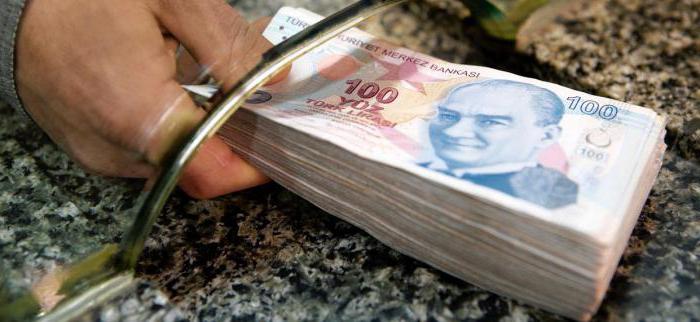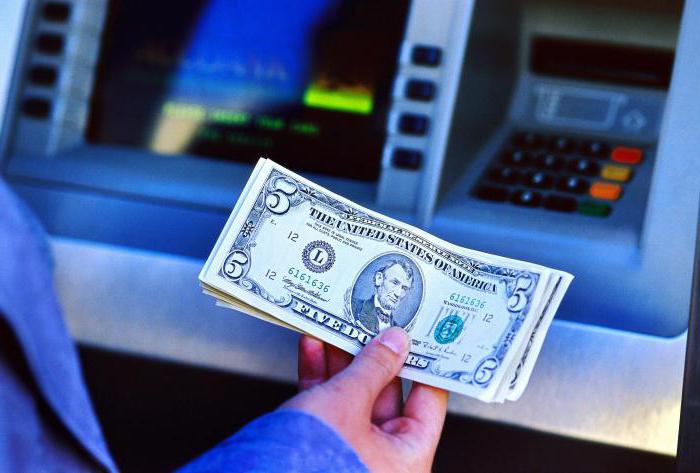In the article, we consider the banking and money multiplier. In the presence of a two-tier structure, the non-cash issue mechanism operates on the basis of bank credit, and, moreover, deposit multiplication. To correctly understand non-cash money emission as an objectively acting process that affects economic turnover, you need to know the principle of operation of the animation mechanism. Translated from the Latin language, "animation" means "multiplication".

What is a bank multiplier?
As part of the assessment of non-cash cash emissions, one should take into account the possibility of the influence of other participants in economic turnover on the animated mechanism of non-cash funds. Against the background of the rigidity of the banking structure, which is created by special economic standards, under certain conditions, financial institutions can, at their discretion, and, in addition, in accordance with the situation of the financial market, not only create, but also completely eliminate deposits.
What is it for?
The Central Bank of the Russian Federation, thanks to the management of the multiplier of bank reserves, can expand or narrow the issuing opportunities of financial institutions. In the definition of a narrow financial base, invest the cash issued by the central bank in circulation, as well as the balances on the accounts of the necessary reserves from credit centers.
True, it must be borne in mind that in countries with developing economies cash management plays various roles from the point of view of using a narrow financial base, in comparison with industrialized countries. This is due to the fact that advanced economies are always trying to minimize the necessary reserves as an element of a narrow monetary base.

The monetary base and its elements
Of considerable importance for managing the work of the banking multiplier is the broad-based monetary base, which, in addition to the elements of a narrow financial base, includes the following funds from credit institutions in the central bank:
- Cash held in correspondent accounts.
- Deposit funds.
- Investments in central bank bonds.
- Other liabilities incurred by the central bank on certain transactions with credit centers in national currency.
What is the bank multiplier equal to? This is a common question.
Reserve money concept
It should be emphasized that in the analytical definition, the central bank also uses the concept of reserve money. In quantitative terms, they can exceed the broad financial base by the amount of the demand deposit of institutions that are participants in the economic turnover serviced at the central institution. For this reason, it will be possible to fully evaluate the basis along with the possibilities of deposit issue, which affects the economic turnover, only if we use the potential of the elements of a broad financial base, and, in addition, reserve money and its dynamics.

Credit facility
The multiplier of the banking system in its broad sense is an integrated lending mechanism that ensures the elasticity of economic and cash flows along with the quick response to the behavior of financial market participants.
Under the financial multiplier understand the processes of issue of means of payment of economic turnover with an increase in the monetary base by one unit. That is, means of the central bank.Peculiarities of regulating and evaluating this process directly depend on the inclusion of financial assets with reduced liquidity in the calculation of monetary aggregates. At the same time, it is also important to take into account the likelihood of an outflow of cash from bank structure deposits.
Bank Multiplier Mechanism
The multiplier is defined as the ratio of the money supply to the financial base. The money multiplier reveals the ability of financial aggregates to influence economic processes. From 1998 to 2003, the money multiplier in Russia changed from an indicator of 1.40 to a value of 2.1.

When assessing the impact of the financial animation mechanism, the following factors must be considered:
- Existing conditions for the movement of funds between banking organizations.
- The impact of the movement of financial resources on the expansion of credit investments in the banking structure.
- The degree of substantiation of the dependence of the existing volume of credit investments on the availability of a deposit in a particular bank.
- The possibility of making a reservation by banks of large financial resources.
- Withdrawal of a portion of bank deposits in the form of cash.
- Converting a certain share of bank deposits into fixed-term forms, which may not be included in the calculation of the money supply.
- Paid basis of the loan provided by banking organizations.
- The level of interest of banking institutions in making a profit.
- Openness, and, in addition, transparency of the financial market.
What else does a bank multiplier mean?
Mechanism basics
In the most informative and functionally justified form in modern literature, the mechanism of banking animation is presented in textbooks on macroeconomics.
It is important to consider the features of the functioning of the banking structure as an independent, and, in addition, an autonomous and professional participant in economic turnover. Therefore, it is required, first of all, the study of the specifics of the legal framework along with the operations.

Quantification
The bank multiplier is a quantitative assessment of the process of multiplying money on deposit accounts in commercial structures. Directly, the banking animation mechanism operates continuously; it is determined using the following coefficients:
- The value of banking animation.
- The indicator of changes in the money supply.
The mechanism of banking animations can function only within the framework of a two-tier financial system. In this case, the first level is the central bank, which controls this mechanism.
The second level is represented by commercial banks that make this mechanism work. At the same time, they force him to act automatically, regardless of the desire of the leadership of individual banks.
Thus, money cannot be multiplied by one commercial bank. Cash directly multiplies the entire system.

Bank deposit multiplier functions regardless of whether loans were granted to commercial institutions or to the government. Finance in this situation will go to budget accounts in commercial banks.
This money is also related to attracted resources, therefore, the mechanism of banking animation is activated. The banking multiplier formula looks like this:
- m = Money supply / Money base = M / B.
This mechanism works not only thanks to the provision of credit by the central bank. It can also be launched in situations in which the central bank purchases securities or a particular currency from commercial organizations.
The central bank is also capable of turning on this mechanism in situations in which it reduces the rate of deductions in favor of required reserves.In this case, the free reserve of commercial organizations increases, which, with other things being equal, can lead to an increase in lending, and, in addition, to the inclusion of a money multiplier. Banking money must be used correctly.
Of all the actual investments of commercial institutions in active operations, only credit deposits can create new deposits. Thus, they make it possible for the banking system of the country to perform an emission function. Therefore, the higher the share of lending in assets, the greater will be the volume of issuing activity.
Animation process as a continuous phenomenon
Could it be that the bank multiplier is “5”? He will never be able to achieve such a significance. This is because part of the money will always be used for other operations that are not credit. At the cash desk of any banking institution must always be present cash for cash transactions.
Given that the process of animation is continuous, its coefficient is calculated for a certain period of time, for example, for one year. Calculations show how much the money supply that was in circulation was increased over a given period. It is necessary to pay attention to the fact that the size of a possible increase in finances by commercial structures does not depend on their total number.
Of great importance in assessing the mechanism of the banking multiplier are various factors that affect its ratio.
Minimum capital
The minimum size of the statutory capital of a commercial organization and the banking structure as a whole, within the framework of the increase, has an upward effect on the mechanism, and, in addition, on the multiplier. But against the background of an official increase in the established minimum amount of capital, the number of banking organizations can be reduced so much that the total assets of the entire financial system can significantly decrease.

The conjuncture of some individual segments of the financial market along with changes in the monetary income of the population, the amount of central bank lending to commercial organizations and the government, changes in the size of the cost of goods, the structure of borrowed resources, the state of the bank transfer system and the volume of interbank loans can also have an upward impact on the functioning of animation mechanism.
True, it should be noted that for a number of positions such a tendency may acquire the opposite direction. For example, something similar is possible within the framework of preference by credit institutions for operations in securities markets, and, moreover, on a currency platform. An inflationary increase in prices for services and goods, including one that is not accompanied by a rise in production, may force banking institutions to reduce their lending volumes.
Conclusion
Thus, the issue of non-cash finances is primary and occurs by crediting additionally issued funds to the correspondent account of a credit institution in the form of a loan from a central bank or a budget allocation.
With the existence of a two-tier banking structure, the mechanism of non-cash money issues operates on the basis of animation. The bank multiplier is understood, in turn, as the process of increasing money on the deposit account of a commercial bank during their movement from one financial structure to another.